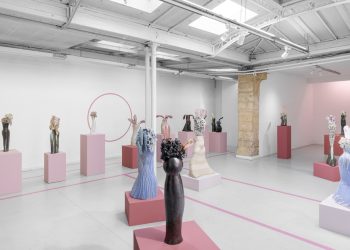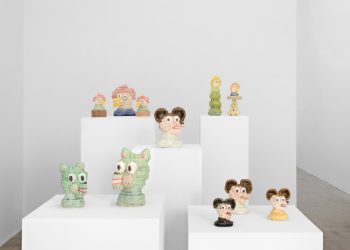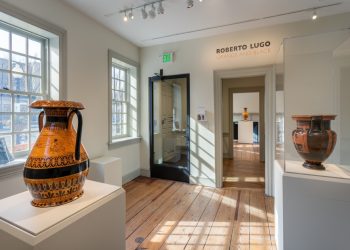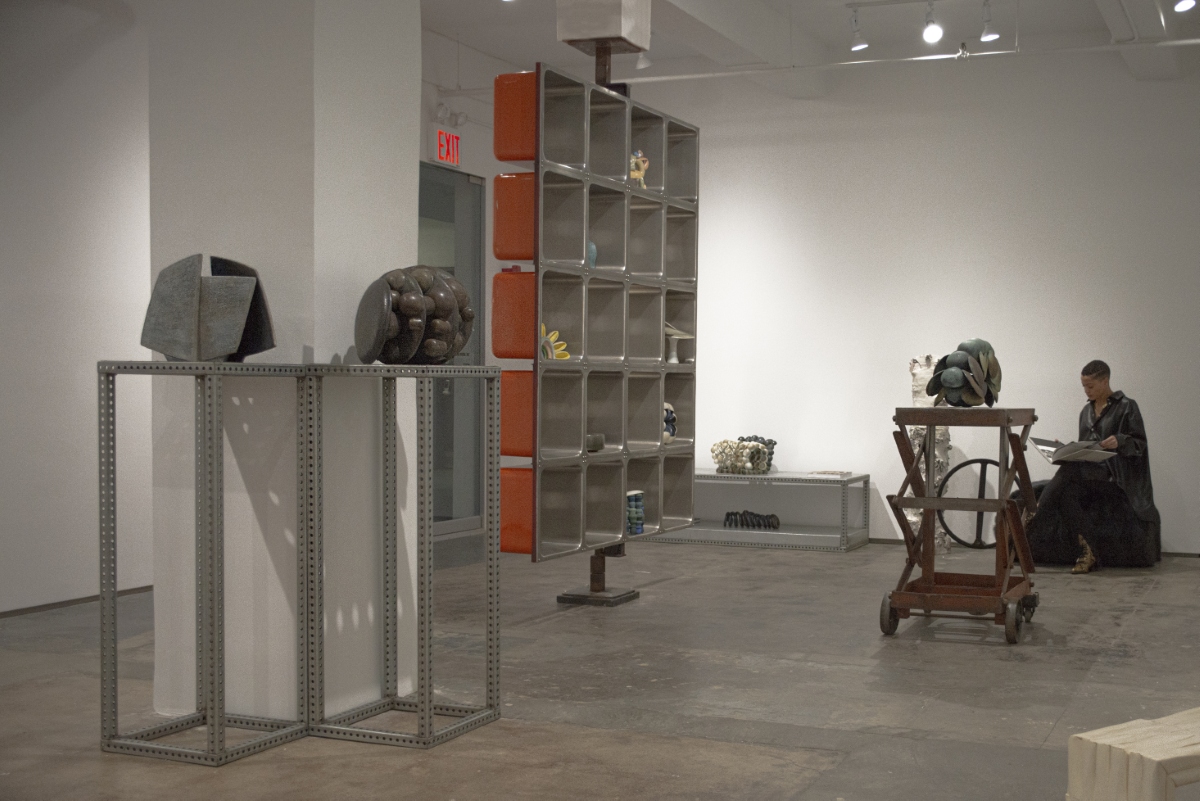
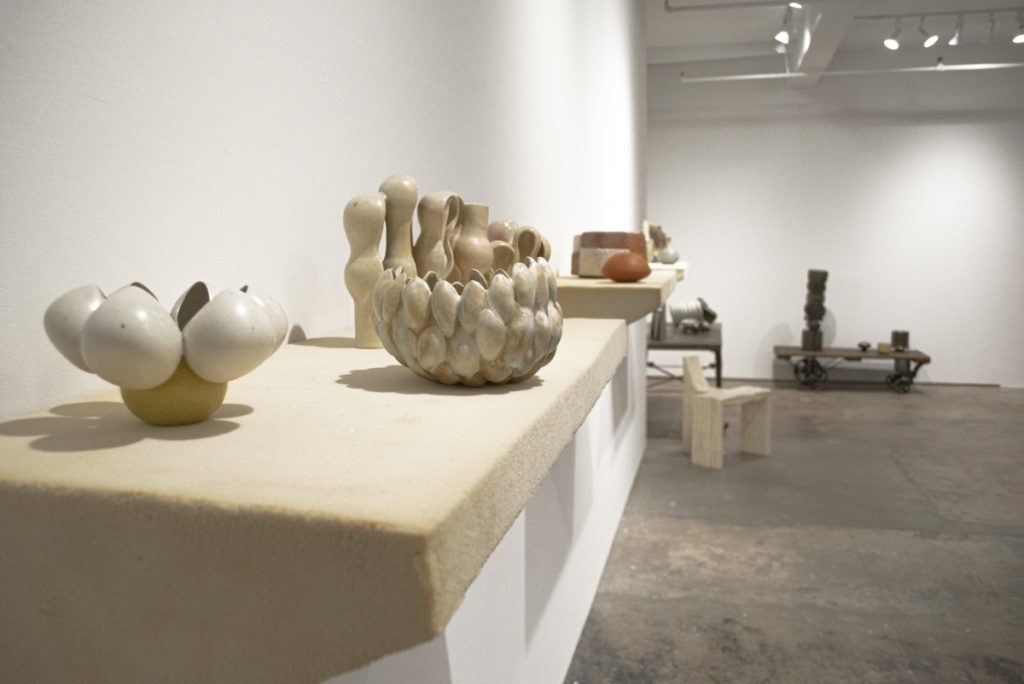
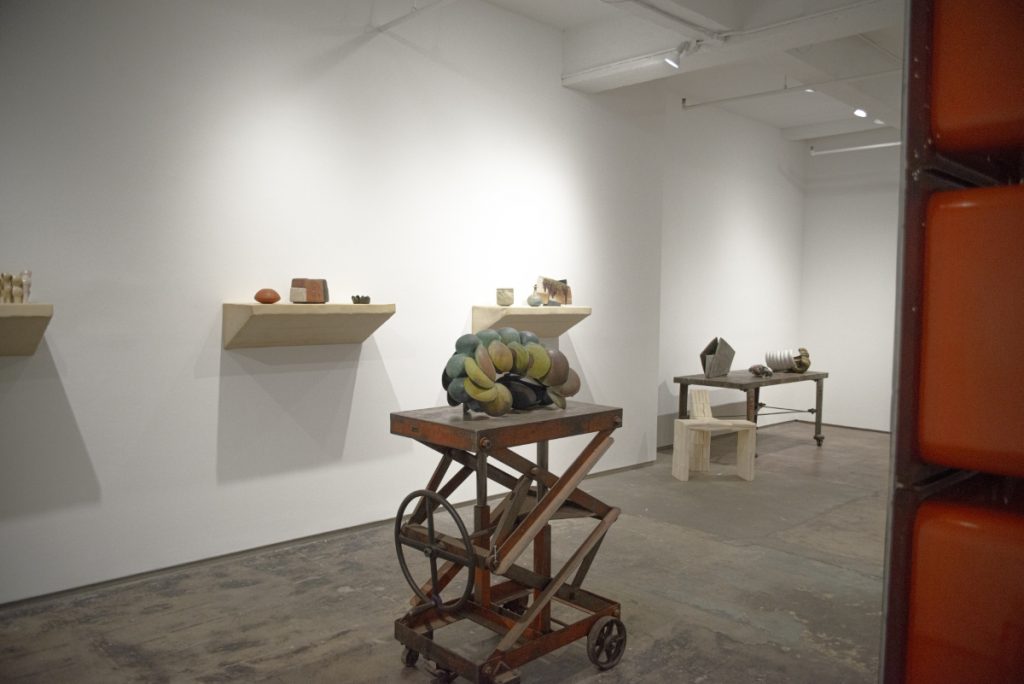
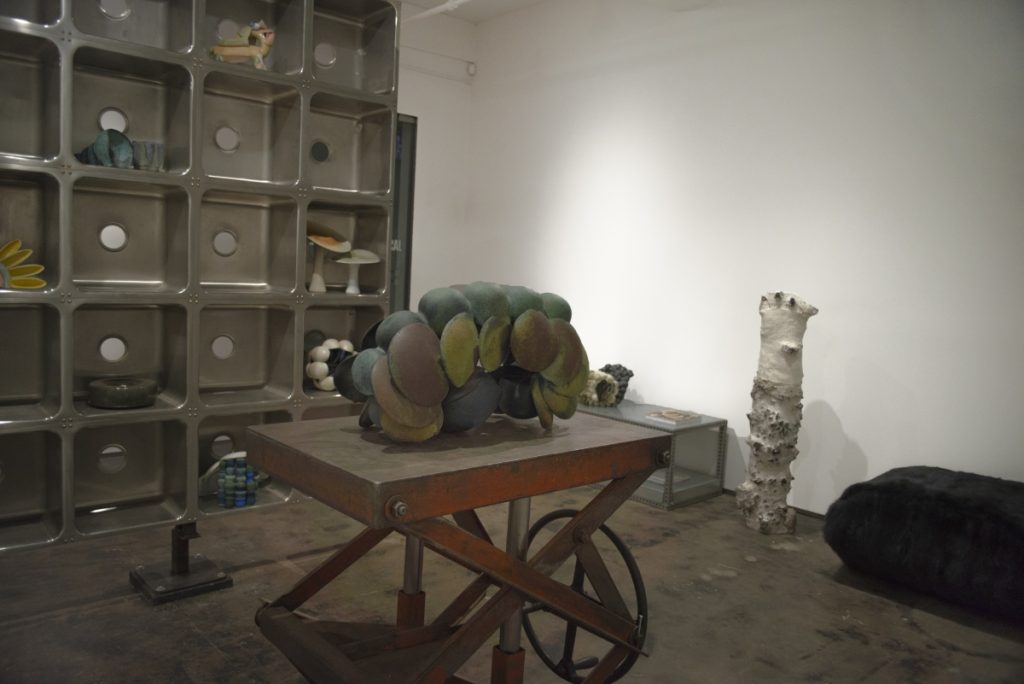
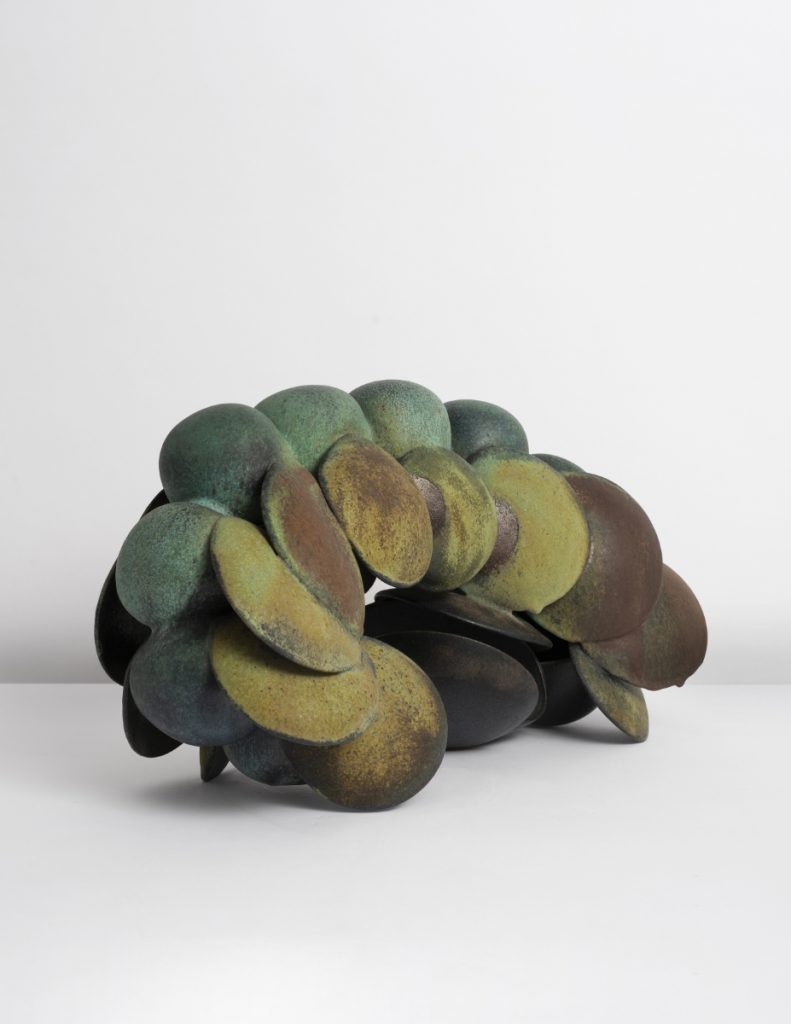
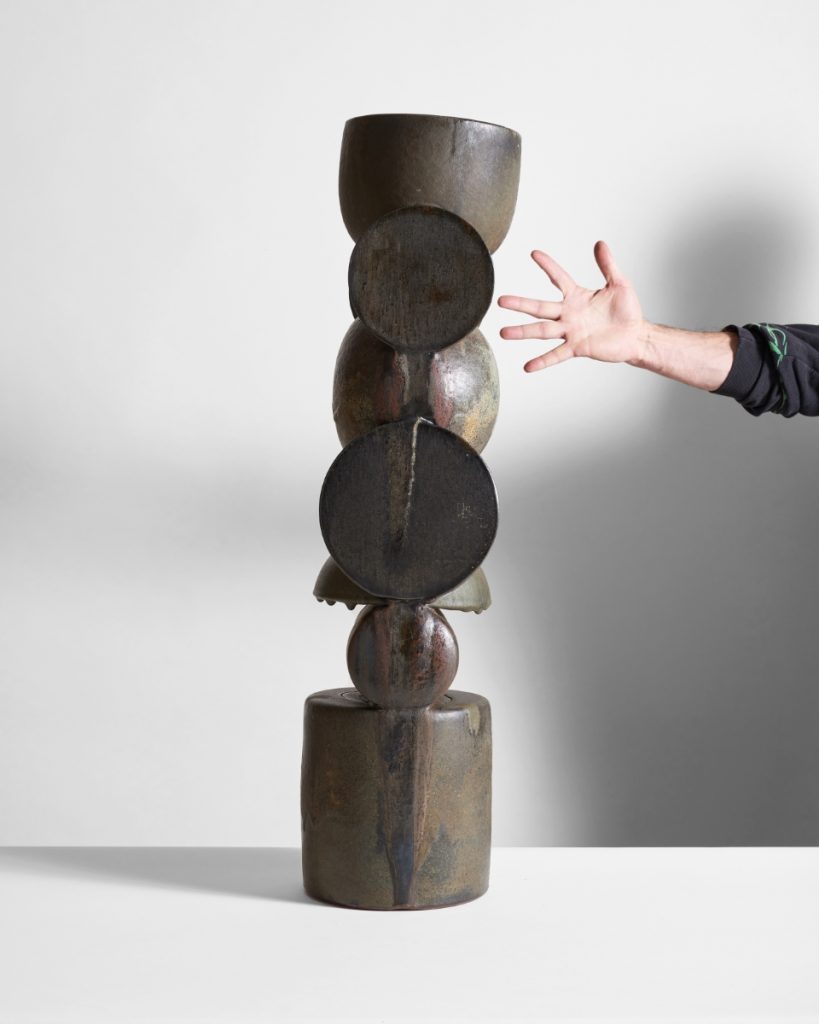
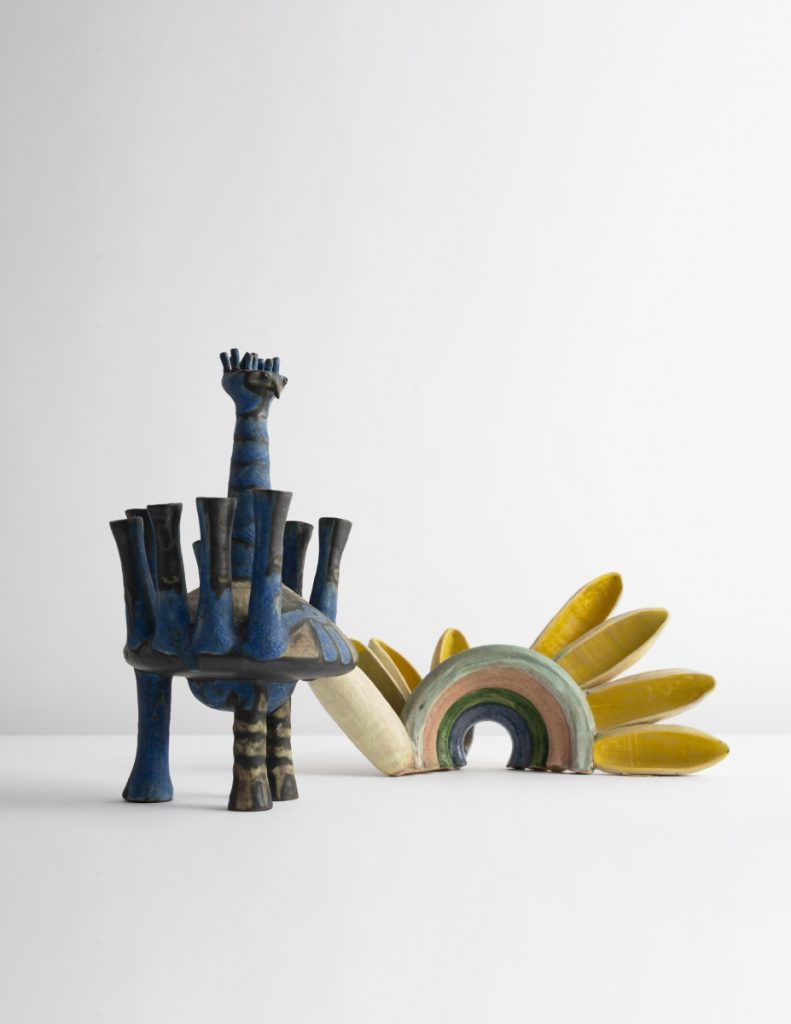
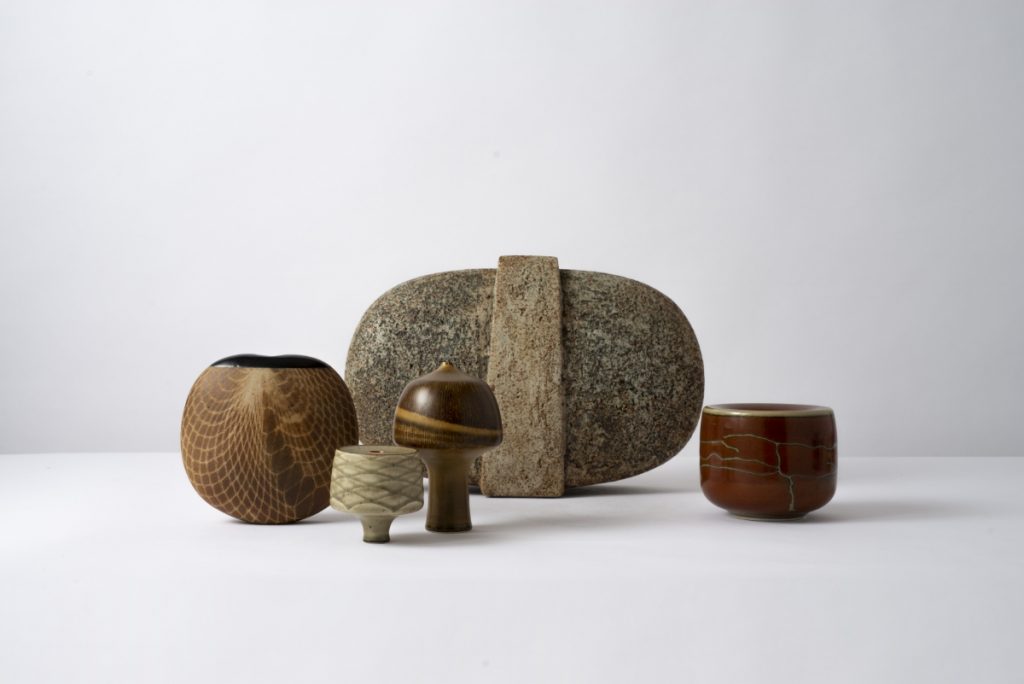

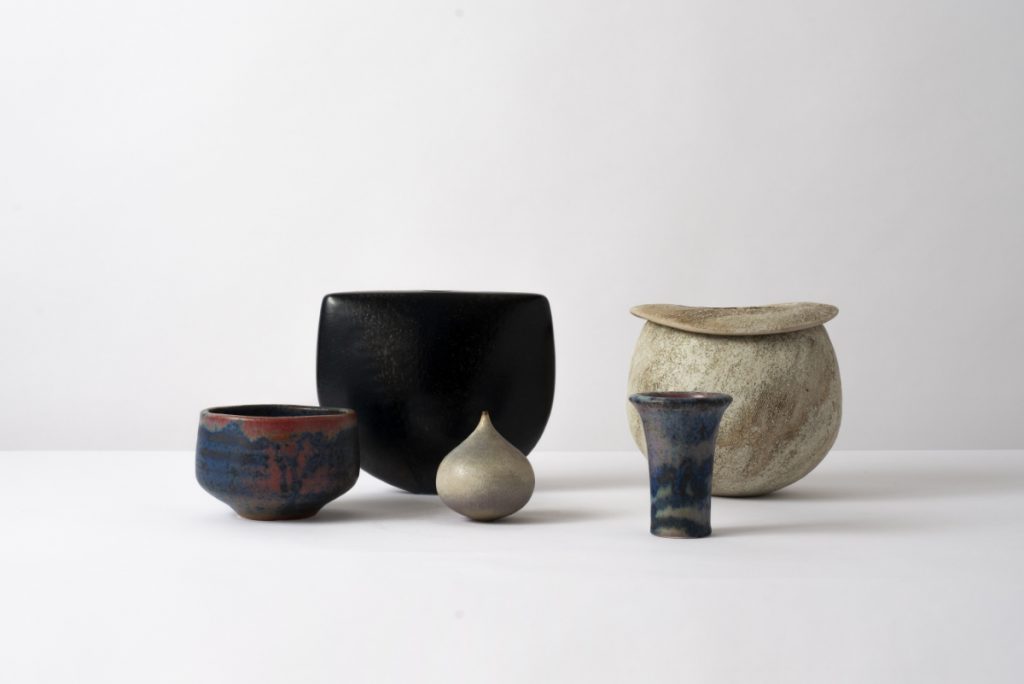
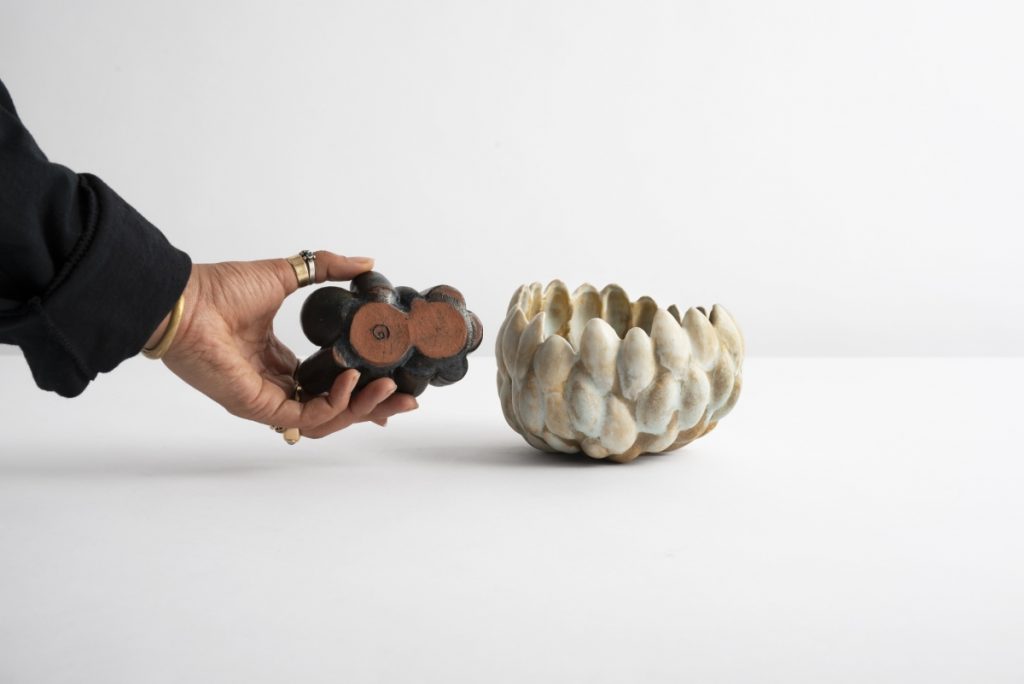
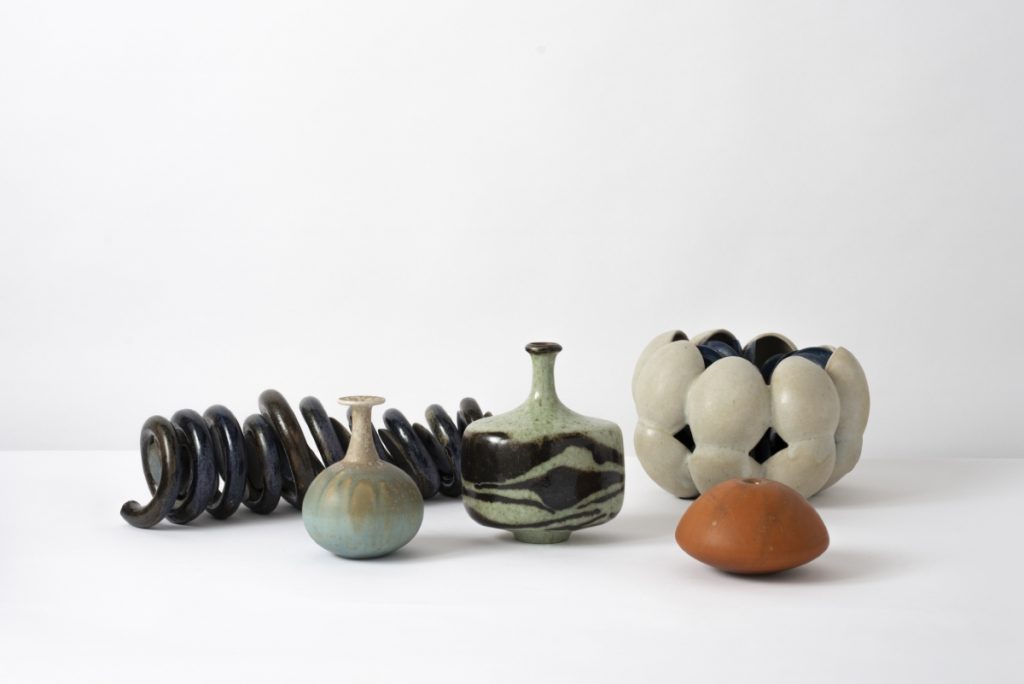
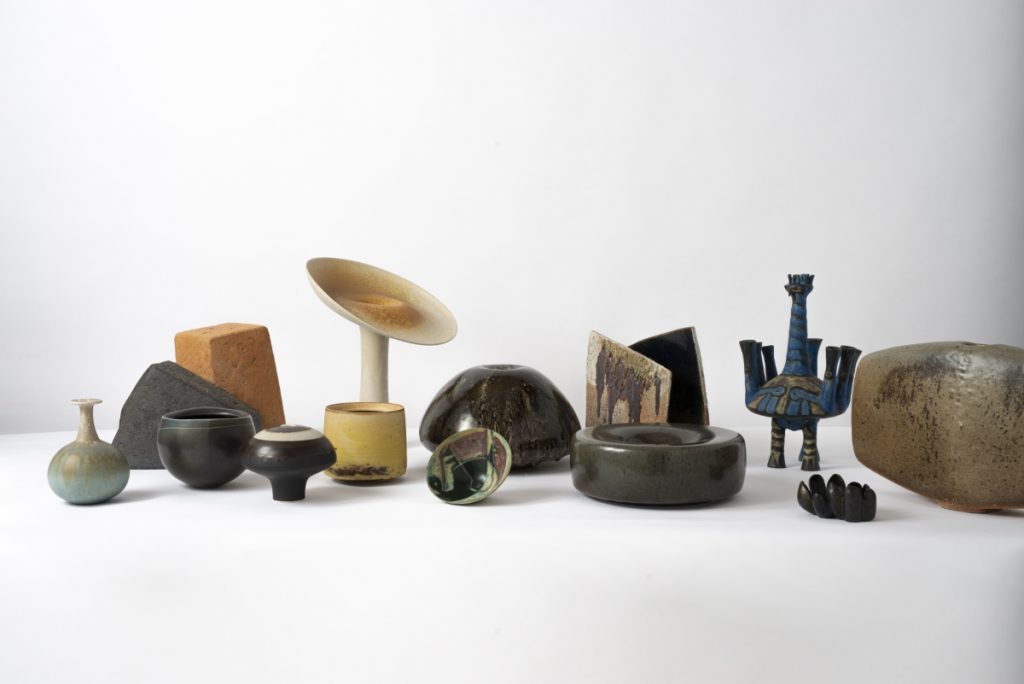
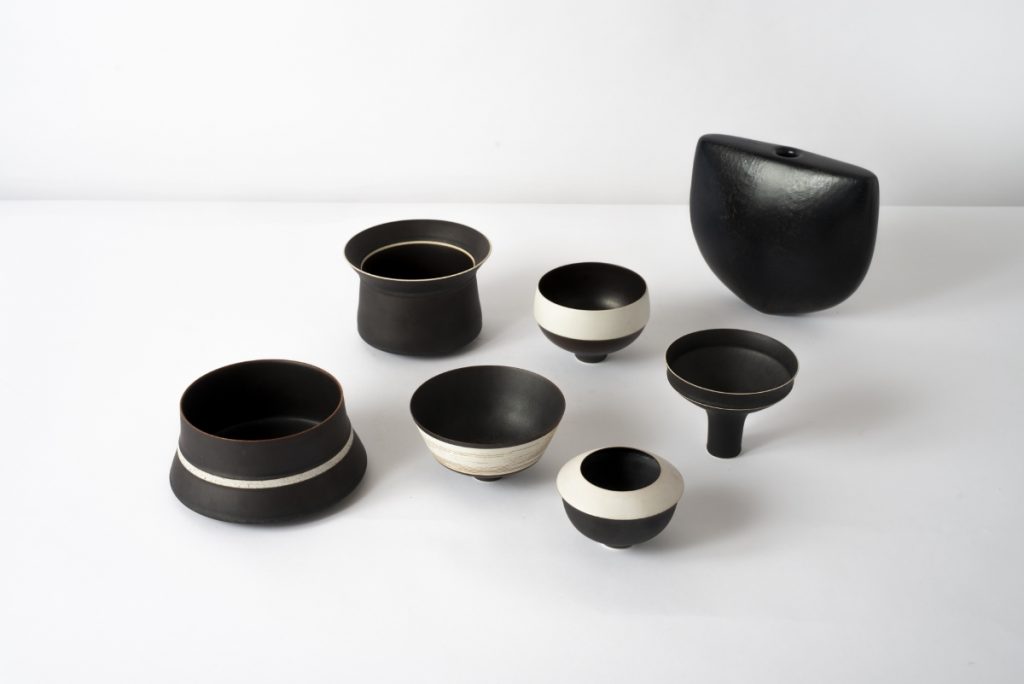
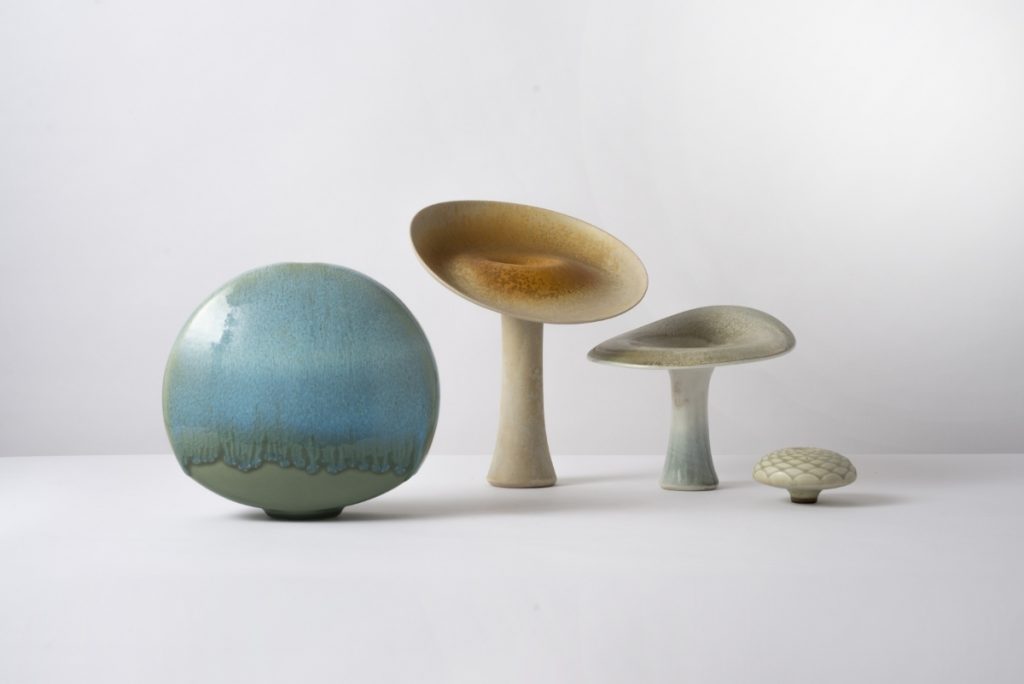
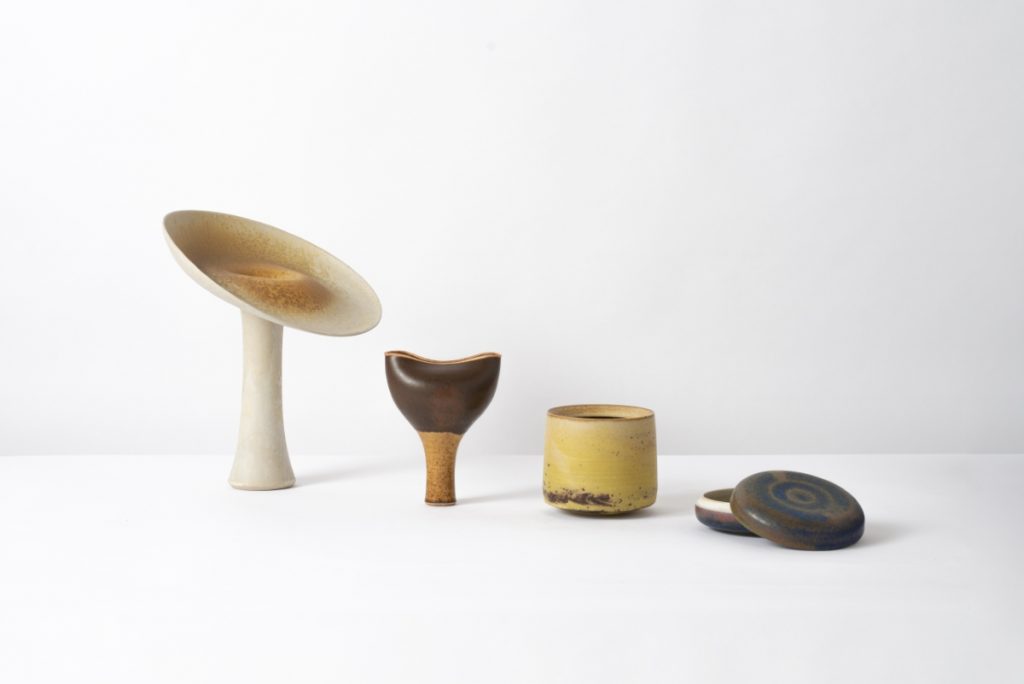
The London Group is on view at Jason Jacques Gallery, New York
May 10 – June 29, 2022
On an international level, until the late 1960s, German ceramics went widely unacknowledged. Indeed, it was a 1968 exhibition at London’s Primavera Gallery which changed the game for German pottery. Featuring works by Beate Kuhn, Ursula and Karl Scheid, Gotlind and Gerald Weigel, and Margarete Schott the show was met with great acclaim and following its success the unassuming troupe of post-war German ceramists featured in it were christened The London Group.
It was each sculptor’s exceptional ability to produce a distinct body of work but somehow elicit a sense of collective cohesion, as though guided by the same clay zeitgeist, that made them particularly compelling.
Kuhn in particular stands out as one of the most important German ceramists of the Post-War era. Born in Düsseldorf in 1927 and raised by a pianist and a sculptor she is known for her rhythmic, modular, and detail-driven work. She attended the University of Frieburg where, after two years of Art History, her focus shifted to clay— the passion which would become her life’s work. Kuhn leans into curvilinear shapes, matte, bright colors, and works to build a visual language dependent on iteration and re-iteration. Her forms strike an imaginative balance between the geological and the biomorphic. She was deeply influenced by her compatriots, with whom she remained close throughout her life.
It is worth noting that, in the years preceding the exhibition which crossed all their paths, these ceramists were all influenced by the ideas of English studio potters— from Lucie Rie, to Harry Davis and Bernard Leach. But this motley crew of potters all in one way or another influenced and learned from one another. Margarete Schott, following her practical training, developed a particular interest in glaze application, cloaking her understated forms in luminous, multi-layered colors. Ursula and Karl Scheid’s oeuvre, on the other hand, epitomizes skill on the wheel through their somber emphasis on shape and a sleek economy of gesture (the couple shared a studio, swapped ideas, and used near-identical stamps). Gerald (who learned ceramics as an inherited craft) and Gotlind Weigel make works which emphasize visual weight but in very different ways, for while Gotlind leans into the sculptural Gerald’s work is distinctly architectural.
Ultimately, this exhibition examines an unlikely and iconic group of ceramist’s distinct approaches to their medium as they grapple with the intricacies of modernity. Their work provides a glimpse into a dazzling historical moment characterized by the creative frenzy of the Post-War era from which these stunning, sculptural objects sprung— objects which would go on to radically change the trajectory of 20th century ceramics.
Contact
info@jasonjacques.com
Jason Jacques Gallery
529 W 20th Street
New York, NY 10011
United States
Photos courtesy of the gallery



